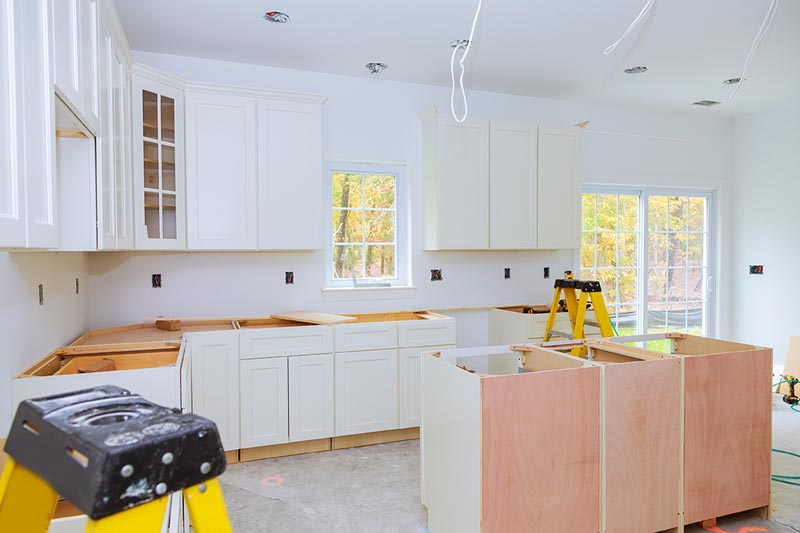Nothing compares to the feeling you get when bringing a new baby home for the…
How to get rid of PMI / MIP (private mortgage insurance / FHA, mortgage insurance premium)
Call or text your question to 562-881-9811
email us to AnswerMyQuestion@homecentralfinancial.com

Call or text your question to 562-881-9811
email us to AnswerMyQuestion@homecentralfinancial.com
Refinancing to get out of PMI/MIP
The refinancing tactic works if your home has gained substantial value since the last time you got a mortgage. For example, if you bought your house four years ago with a 10 percent down payment, and the home’s value has risen 15 percent since then, you now owe less than 80 percent of what the home is worth. Under these circumstances, you can refinance into a new loan without having to pay for PMI/MIP saving thousands of dollars throughout the life of the loan.
If you purchased a house and made a down payment of less than 20 percent, the lender required you to buy mortgage insurance (MIP/PMI). The same goes if you refinanced with less than 20 percent equity.
Refinancing out of PMI/MIP is one of the fastest ways to stop paying Mortgage Insurance.
It is possible to refinance out of PMI/MIP if your property has increased in value by at least 20%. You don’t have to wait to pay down the loan balance to 80% of the home’s “original” appraised value. Refinance today to stop paying mip/pmi. You could save thousands through the life of your loan.
Example: If you purchased your home at $300,000 and now your home’s value (worth) is at least $350,000 -$360,000 you now have 20% equity. As long as you have 20% equity you can refinance out of mortgage insurance, lowering your house payment and possibly saving hundreds on your mortgage payment every month.
Although you can ask your lender to cancel mortgage insurance on a conventional loan or an FHA loan before 2013, your lender will not remove your mortgage insurance if you got an FHA loan (Federal Housing Administration) after 2013. You can, however, get rid of FHA mortgage insurance (MIP) by refinancing into a non-FHA-insured loan once you have at least 20% equity.
How to get rid of PMI by requesting your lender to remove it
To remove PMI, or private mortgage insurance on a “conventional” loan, you must have at least 20 percent equity in the home. You may ask the lender to cancel PMI when you have paid down the mortgage balance to 80 percent of the home’s “original” appraised value. When the balance drops to 78 percent, the mortgage servicer is required to eliminate PMI.
$550.00 Free Appraisal Value Refinance Coupon
Another way to stop paying mortgage insurance is to request your lender to remove mortgage insurance if you have a conventional loan or an FHA loan before 2013.
Ways to cancel PMI sooner
Here are steps you can take to cancel mortgage insurance sooner or strengthen your negotiating position:
- Refinance: If your home value has increased enough, the new lender won’t require mortgage insurance.
- Get a new appraisal: Some lenders will consider a new appraisal instead of the original sales price or appraised value when deciding whether you meet the 20 percent equity threshold. An appraisal generally costs $450 to $600. Before paying for an appraisal, ask the lender whether this tactic will work to get rid of PMI for your loan.
- Prepay on your loan: Even $50 a month can mean a dramatic drop in your loan balance over time.
- Remodel: Add a room or a pool to increase your home’s market value. Then ask the lender to recalculate your loan-to-value ratio using the new value figure.
Refinancing to get out of PMI
When mortgage rates are low, as they are now, refinancing can help you to not only get rid of PMI, but to reduce your monthly interest payments. It’s a double dose of savings.
The refinancing tactic works if your home has gained substantial value since the last time you got a mortgage. For example, if you bought your house four years ago with a 10 percent down payment, and the home’s value has risen 15 percent since then, you now owe less than 80 percent of what the home is worth. Under these circumstances, you can refinance into a new loan without having to pay for PMI.
Many loans have a “seasoning requirement” that requires you to wait at least two years before you can refinance to get rid of PMI. So if your loan is less than 2 years old, you can ask for a PMI-canceling refi, but you’re not guaranteed to get approval.
What mortgage insurance is for
Mortgage insurance reimburses the lender if you default on your home loan. You, the borrower, pay the premiums. When sold by a company, it’s known as private mortgage insurance or PMI. The FHA sells mortgage insurance, too.
Know your rights
By law, your lender must tell you at closing how many years and months it will take you to pay down your loan enough to cancel PMI.
Mortgage servicers must give borrowers an annual statement that shows whom to call for information about canceling mortgage insurance.
Getting down to 80% or 78%
To calculate whether your loan balance has fallen to 80 percent or 78 percent of original value, divide the current loan balance (the amount you still owe) by the original appraised value (most likely, that’s the same as the purchase price).
Formula: Current loan balance / Original appraised value
Example: Dale owes $171,600 on a house that cost $220,000 several years ago.
$171,600 / $220,000 = 0.78.
That equals 78 percent, so it’s time for Dale’s mortgage insurance to be canceled.
Other requirements to cancel PMI
According to the Consumer Financial Protection Bureau, you have to meet certain requirements to remove PMI:
- You must request cancellation in writing.
- You have to be current on your payments and have a good payment history.
- You might have to prove that you don’t have any other liens on the home (for example, a home equity loan or home equity line of credit).
- You might have to get an appraisal to demonstrate that your loan balance isn’t more than 80 percent of the home’s current value.
Higher-risk properties
Lenders can impose stricter rules for high-risk borrowers. You may fall into this high-risk category if you have missed mortgage payments, so make sure your payments are up to date before asking your lender to drop mortgage insurance. Lenders may require a higher equity percentage if the property has been converted to rental use.
Call or text your question to 562-881-9811
email us to AnswerMyQuestion@homecentralfinancial.com
I am raw html block.
Click edit button to change this html




